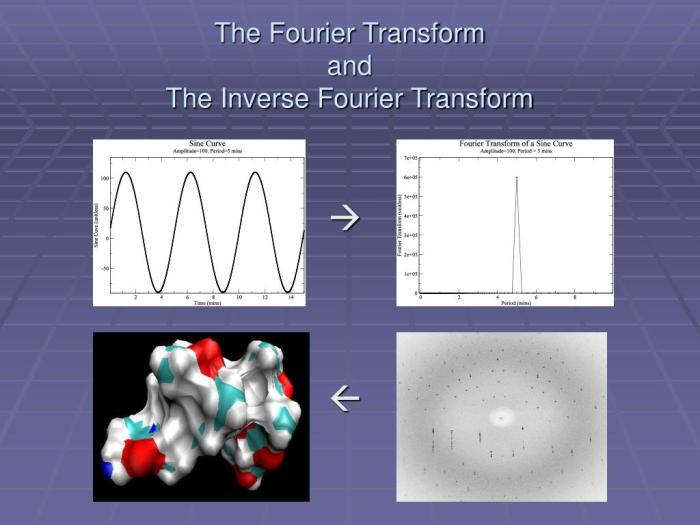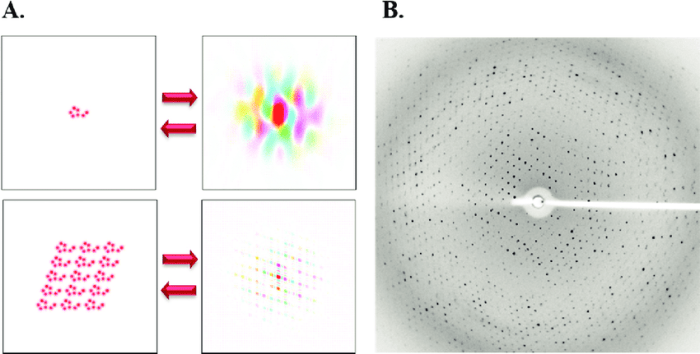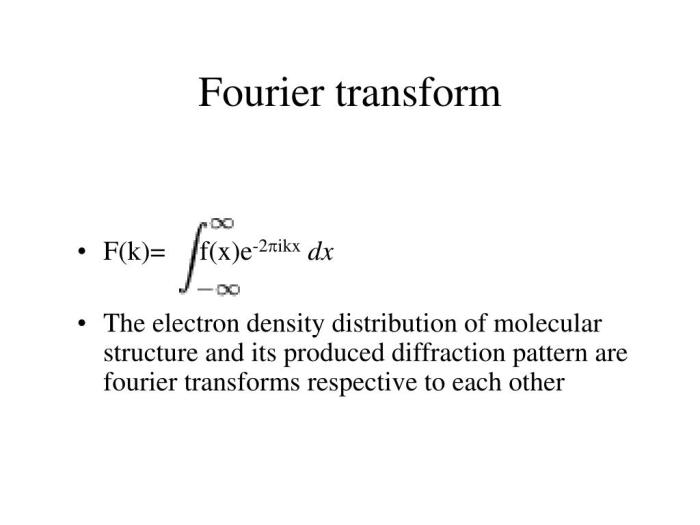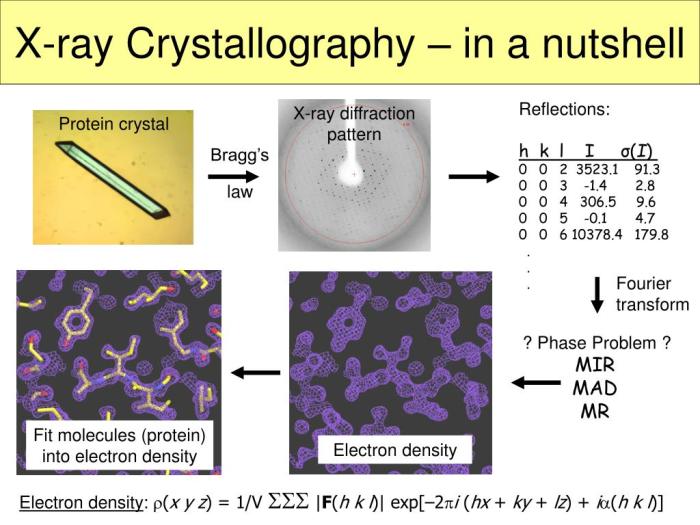Fourier transform in x ray crystallography – Fourier transform in X-ray crystallography stands as a cornerstone technique, enabling scientists to decipher the intricate atomic arrangements within crystalline materials. Since its inception, this mathematical tool has revolutionized the field, providing unparalleled insights into the molecular world.
The Fourier transform, with its ability to convert diffraction patterns into electron density maps, has empowered researchers to visualize and analyze crystal structures with unprecedented precision. This transformative capability has opened doors to a multitude of applications, from drug discovery to materials science.
1. Introduction

Fourier transform is a mathematical tool that decomposes a signal into its constituent frequencies. In X-ray crystallography, Fourier transform is used to convert the diffraction pattern of a crystal into an electron density map, which can be used to determine the crystal structure.
The history of Fourier transform in X-ray crystallography dates back to the early 20th century, when William Lawrence Bragg and William Henry Bragg developed the Bragg equation, which describes the diffraction of X-rays by crystals. In the 1950s, David Sayre developed the Sayre equation, which provides a direct method for calculating the electron density map from the diffraction pattern.
2. Theoretical Foundation

The mathematical basis of Fourier transform is the Fourier integral theorem, which states that any function can be represented as a sum of sinusoidal functions of varying frequencies.
In X-ray crystallography, the diffraction pattern is a two-dimensional function that represents the intensity of the X-rays scattered by the crystal. The Fourier transform of the diffraction pattern is a three-dimensional function that represents the electron density of the crystal.
The reciprocal lattice is a mathematical construct that is used to describe the diffraction pattern of a crystal. The reciprocal lattice is a three-dimensional lattice that is related to the real-space lattice of the crystal by the Fourier transform.
The structure factor is a complex number that is used to describe the scattering of X-rays by a single unit cell of a crystal. The structure factor is calculated from the electron density of the unit cell.
The electron density is a three-dimensional function that represents the probability of finding an electron at a given point in space. The electron density can be used to determine the atomic positions and the chemical bonding in a crystal.
3. Practical Applications
Fourier transform is used in a wide variety of applications in X-ray crystallography, including:
- Determining the crystal structures of new materials
- Studying defects in crystals
- Analyzing the properties of materials
4. Limitations and Challenges: Fourier Transform In X Ray Crystallography

Fourier transform is a powerful tool, but it has some limitations and challenges.
- The Fourier transform of a diffraction pattern is a complex function, and it can be difficult to interpret.
- The Fourier transform is sensitive to noise in the diffraction pattern, and this can lead to artifacts in the electron density map.
- The Fourier transform is a computationally expensive operation, and this can limit its use for large crystals.
5. Recent Advancements and Future Prospects

There have been a number of recent advancements in Fourier transform techniques for X-ray crystallography.
- The development of new algorithms has made it possible to calculate the Fourier transform of large diffraction patterns more efficiently.
- The development of new methods for denoising diffraction patterns has reduced the impact of noise on the electron density map.
- The development of new methods for interpreting the Fourier transform has made it easier to determine the crystal structure of complex materials.
These advancements have made Fourier transform a more powerful tool for X-ray crystallography, and they are likely to lead to new discoveries in the future.
Commonly Asked Questions
What is the fundamental principle behind Fourier transform in X-ray crystallography?
Fourier transform utilizes the concept of superposition to convert a diffraction pattern, which is a collection of scattered X-ray intensities, into an electron density map that represents the spatial distribution of electrons within a crystal.
How has Fourier transform contributed to drug discovery?
By providing detailed structural information about proteins and other biomolecules, Fourier transform has facilitated the design and development of targeted therapies and drugs.
What are some limitations associated with Fourier transform in X-ray crystallography?
Fourier transform assumes a periodic arrangement of atoms within a crystal, which may not always be the case in real-world samples. Additionally, the technique can be computationally intensive, especially for large and complex structures.